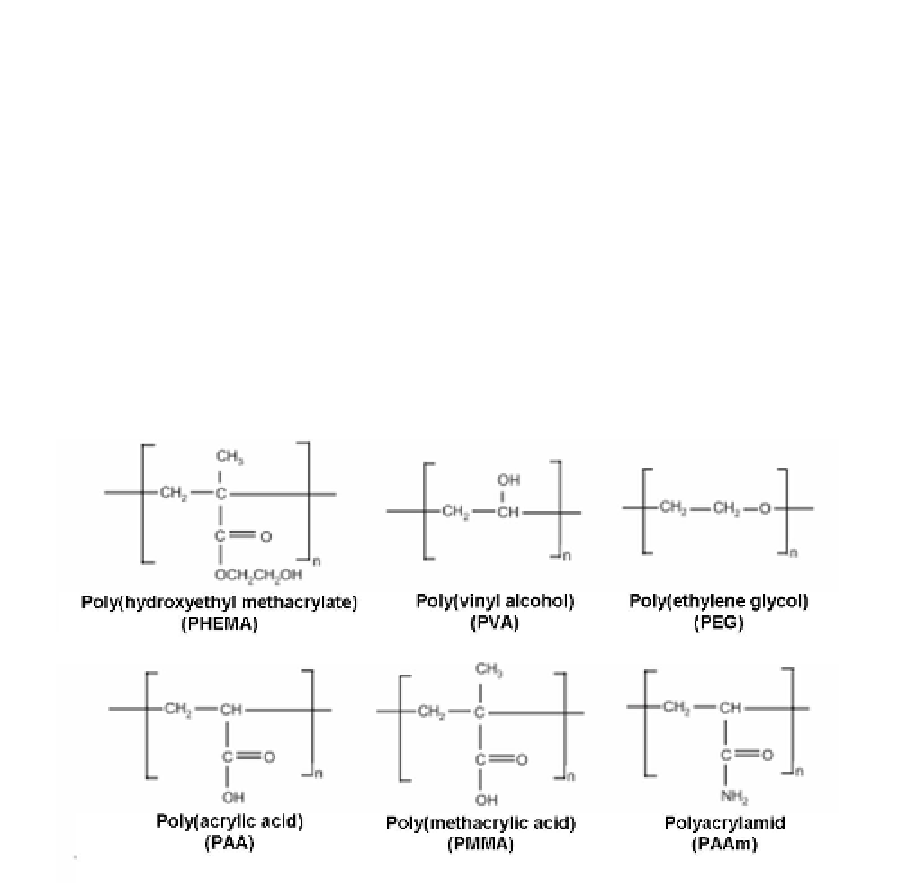Biomedical Engineering Reference
In-Depth Information
components which are in vivo present in the extracellular matrix (ECM) of mammalian cells.
Since they are derived from natural sources, hydrogels formed from these polymers are
inherently cytocompatible and bioactive. They can promote many cellular functions due to a
diversity of endogenous factors present. However, scaffolds fabricated from natural sources
are rather complex and often ill-defined, making it difficult to determine exactly which
signals are promoting the cellular outcome (Cushing & Anseth, 2007). Furthermore they can
possess an inherent batch-to-batch variability which can affect sensitive cells in their
viability, proliferation, and development (Cushing & Anseth, 2007). Due to these limitations
of gels formed from natural polymers, a wide range of synthetic polymers has been found
suitable regarding their chemical and physical properties (Hoffman, 2002). The advantages
of synthetic gels include their consistent composition and predictable manipulation of
properties.
A few examples of synthetic hydrogel building blocks are given in
Figure 1
, including
neutral (upper row) and ionic (bottom row) monomers (Peppas et al., 2006).
Fig. 1. Some examples of synthetic hydrogels that are used in biomedical applications.
Reproduced with permission from Peppas et al.,
Adv. Mater.
,
18
, 1345-60. Copyright 2006
John Wiley and Sons.
Proteins are molecules, which often adsorb unspecifically from solution at biomaterial
interfaces, a phenomenon that has been documented in a wealth of publications, e.g.
references: (Andrade & Hlady, 1986; Andrade et al., 1992; Wahlgren & Arnebrant, 1991).
Almost any material, when exposed to a physiological, protein-containing solution, becomes
coated with proteins within seconds. As widely recognized, this adsorption of proteins to
synthetic material surfaces is of great importance in the field of biomaterials as it plays a
determining role for the subsequent cellular responses. Failure of most implant materials
stems from an inability to predict and control the process of protein adsorption and cell
interaction, resulting in an inappropriate host response to the material (Castner & Ratner,
2002; Hlady & Buijs, 1996; Tsai et al., 2002). Biomaterial surface-induced thrombosis, for
example, one of the major problems in clinical applications of materials in contact with

